|
What an exhilarating day! The Women’s March on NYC exceeded my expectations by miles. I hadn’t been to a protest march in fifty years and hardly knew what to expect, but this march was phenomenal. As soon as George and I got off the train in Grand Central we sensed the extra energy in Manhattan. We saw women in pink hats carrying signs and banners. We knew we were in for a great day. Approaching 47th Street and Second Avenue we threaded into a throng of excited, energized people. A ragtag brass band of tuba, trombone, and drums pulled us along onto Second Avenue where people were so tight, shoulder to shoulder, we were barely moving as we merged with crowds coming from the east and north. Smiles and looks of determination surrounded us. Thousands of hand-made signs bobbed in the air. Happy, friendly, energized Americans jammed the avenue. Young people, parents with infants, seniors, people in wheelchairs, Muslims, Asians, blacks, whites, gays, and straights made their way along the route. Women were the intended primary focus of this march, but there were throngs of men, as well. PROTEST SIGNS GALORE George and I had brought a sign promoting Equality, Fairness, and Tolerance, but the others signs ranged from obscene to hilarious – many of them championing women’s rights, but far more expressing outrage at the new administration in DC. “NYET, TRUMP!”, “IKEA has better cabinets!”, “UNFIT”, “WE REJECT PUTIN’S BITCH”, "A WOMAN’S PLACE IS IN YOUR FACE”, “KEEP YOUR TINY HANDS OFF MY RIGHTS”, “TRUTH NOT TWEETS”, and on and on. One of my favorites was “FREE MELANIA”, which for some reason struck me as hysterically funny. But perhaps the best was “Can we just admit we have taken this ‘anyone can grow up to be president’ thing just a bit too far?” George and I marched—walked, stumbled, or inched along would be more accurate—for four and a half hours, and I was smiling the entire way. What a joy to be in this energetic, creative crowd. PROTEST CHANTS All along the route protest chants rang out, but my favorite was “TELL ME WHAT DEMOCRACY LOOKS LIKE!--THIS IS WHAT DEMOCRACY LOOKS LIKE!” shouted again and again and followed by a huge whooping cheer. All afternoon at regular intervals we heard from behind us a deafening roar of cheering voices, a wave that made its way to us and in which we joined. The sound of thousands and thousands of defiant cries and whistles resonated through the streets of Manhattan all day long. BYSTANDERS On the sidelines people were standing on bollards or shinnying up light poles to get a better view of the crowd. People were hanging from building scaffolding cheering us on. Many others just stood and took photos of the marchers. But up in the windows we spotted a brown-skinned woman cleaning office windows; she waved her bright blue cleaning rag at us. And we waved back. Dark-skinned porters at the windows of a luxury hotel smiled and gave us thumbs up and waved, and we waved back. Children and mothers and apartment dwellers hung signs out their windows and waved, and we waved back. “We are all in this together,” I said to the woman next to me. She smiled and agreed.
To be part of this throng of half a million people was utterly exhilarating and empowering. As one sign declared, “This is not a moment, this is a Movement,” an expression of hope, a pledge of continued resistance to threats on our human rights. I was so proud to be a part of this extraordinary event, and, moving forward, to be carrying a banner for decency.
0 Comments
Well, it’s been quite a year. Some goals met, a number of accomplishments under my belt, and some disappointments, as well. On the positive side, I’ve met my goal of reading fifty books this year, and many of them were superb, giving me hours of relaxing pleasure. A few books were clunkers, but the rest made up for those. I’ve written three short stories this year and had great fun doing it. I made 75 submissions to literary journals, an accomplishment in itself, and I had four stories accepted for publication. It’s so gratifying to know someone is actually reading my words and finding them worthy of passing on to others. I’ve also written seven blog posts. Now, that’s puny compared to most blog writers, but there’s this little thing called time that often seems in short supply. Maybe that’s because of the 42 mini book reviews I’ve written on Goodreads.com this year. All this sounds like a lot of writing but surely a good deal less than some of my writer friends. My friend Alison McBain entered NaNoWriMo and wrote 50,000 words—an entire novel—in a month! One major accomplishment for my 2016 was getting this website up and running. It’s a simple one, but I was thrilled that I managed to create it all by myself (with the help of Weebly support, of course). So lots of great things happened this year in my writing life and the rest of my life, too—plenty of travel and fun times with George and with friends. However, in early November my momentum took a hit, and I was plunged into a funk from which I’m still not fully recovered. The unthinkable happened, and soon a man with the demeanor and intellect of a fifth-grader will be taking the reins to lead our country. It’s an ugly and frightening prospect; a very rocky road lies ahead. As a recent acquaintance quipped, “Is it four years yet?” So, we will simply have to press on, speaking out loudly against injustice and incompetence and standing up for values we know to be best: unity, brotherly love, acceptance, and equality. Hopefully we’ll be able to somehow make things right.
My best wishes go to all my readers for joyous holidays and a bright new year! As I set pencil to paper (really!) to lament the immense invasion of TV and computer screens into our lives, I see how my handwriting has deteriorated. And it’s all because, like most people, I spend so much time typing into computers and staring at screens. Early Television Remember, if you are old enough, when television first came into American households, how our mothers complained, “You’re going to ruin your eyesight if you keep staring at that thing!” We ignored our mothers, of course, and continued to gape in utter fascination at “Captain Video” and “Howdy Doody” and “The Lone Ranger.” Our eyes were glued, there was no unsticking them, and thus began the Age of Screens, an era that has now progressed far beyond what those early video creators might have imagined. Hardly a day, (hah, an hour!) goes by that I am not surrounded by screens—my desktop computer, my laptop, my tablet, my phone, the function screen on my printer, and the television, of course. And beyond home is as bad: the super market screens everywhere (why does my little IGA have opposite the checkout a huge screen advertising septic service companies?), the TV display of financial news at the bank, the screens attached to the equipment at the gym, search screens and self check-out screens at the library; wide screens at bars and restaurants and servers’ ordering screens. (It is a rare and delightful thing to find a restaurant having no screens whatsoever). One cannot avoid screens in taxicabs or airplanes; in fact, a passenger is aggressively confronted with them, and while you might have the ability to shut them off, there are always myriad screens everywhere else. Outdoor signage is increasingly relying on screens. Screens large and small are impossible to avoid. Screen addiction A common sight in public is a group of people sitting or standing or crossing the street (!), their eyes transfixed on screens—laptops, tablets, watches, and phones. A person sitting in an airport or coffee shop without his or her eyes glued to a screen is perhaps an oddity. Recently I had the rare pleasure of enjoying a lovely spa where electronic devices were politely forbidden, and yet one woman, wrapped in a lovely white robe, insisted on blithely scrolling away on her phone, completely oblivious to the serene environment surrounding her. And on a long hike the other day, absorbing nature in all its glory, George and I encountered a young man sitting in the middle of the rocky trail, his phone screen before him. What on earth? Taking a selfie? Sending a quick text? Good grief. And it is not uncommon to see a young family in a restaurant, each member with his or her own device at hand, ignoring each other as they stare at their screens. Is there some sort of addiction at work here? Or do we use screens as a way to avoid human contact? Of course, I am as guilty as the next person; my tablet is on first thing in the morning and last thing at night. I can’t seem to help myself. Delights of the Electronic Age But is my plaint justified? Don’t computer and TV screens provide us vast amounts of information and infinitely beautiful images? Don’t they represent convenience and pleasure? Of course they do. And I wouldn’t want to be without them. But sixteen hours a day? Maybe not. Fortunately the ruination of eyesight our mothers predicted all those years ago has not come to pass. But a mental mindset for information overload has been established—actually, has captivated us—and is unlikely to disappear. My archaic practice of writing in longhand, creating my first drafts by hand, releases me, at least for a couple hours a day, from screens. Of course my handwritten draft will get typed into the computer and edited on the screen, but for one small segment of the day, I can rely on only a lined sheet of paper and my pencil (which has now become quite stubby). If all the screens that surround us were to suddenly shut down, as they do during a power outage, I would still have my pencil and paper and a brain, which, so far, has not been overwhelmed by screens. Postscript: For an in-depth discussion on this topic, read this excellent article by Andrew Sullivan in New York Magazine. http://nymag.com/selectall/2016/09/andrew-sullivan-technology-almost-killed-me.html
I think I’ve come up with a brand new twenty-first century concept: the Art of Doing Nothing.
Two weeks ago I was rehearsing in the chorus of the Dvorak Requiem at Berkshire Choral International in Sheffield, Mass. Nestled in the Berkshire Mountains, the organization is fondly referred to as “summer camp for choristers.” The week was packed with rehearsals, classes, recitals, meals, and other fun activities, and though I had promised myself some time off for pure relaxation, it wasn’t happening. Just like home, there was too much to do; every hour seemed consumed by some activity. My afternoons were “free” time, but I managed to fill them anyway by going to the gym or finishing a book I’d brought. By Thursday I’d had enough. I decided to stretch out on a lounge chair by the pool at the B&B where I was staying. Ah, relaxing with a good book in hand, what could be better? Unfortunately, I’d brought the wrong book, one with disturbing images of death and dying, not very restful. Putting the paperback aside, I realized I had nothing to do. I began to stare at the sky. And smell the minty monarda in the garden. And listen to the whirr of the sprinkler. Only the blue sky and treetops were in my line of vision. I had come to a stop like an antique clock that has wound down to stillness. I was doing something I never, ever seem to find time to do. Nothing. I sat in that state for perhaps a half hour, enjoying the empty sky, the rare inactivity. After a while, my self-imposed schedule demanded I rush off to my next event, but those moments by the pool were precious and forced me to see how little time I spend truly relaxing. Certainly here at home there is little time for real rest. Between writing, doing laundry, gardening, walking the dog, feeding the cat, checking emails, shopping, fixing dinner, etc., etc., etc., there never seems to be a spare moment. Reading, which should be relaxation, really isn’t; while I’m reading, I’m working to understand and absorb the author’s words and thoughts. Watching TV should be relaxing, too, but there is so much noise associated with it, is it restful? Sleep would seem to be doing nothing, but it’s not. The body and brain are working to settle, to slow down, to prepare me for the next day; and the subconscious is surely hard at work. So sleep is not the same as consciously doing Nothing. The practice of doing Nothing has eluded me partially because of fear. The work ethic I was raised with is so deeply ingrained, it has made me afraid of indolence, indolence that could perhaps become an ugly habit and ultimately render me a mindless, sedentary blob. Now, there’s a frightening thought! So I’ve developed the habit of pushing myself to keep going, maintain a schedule of activities, press on, move ahead, and keep busy. As a result, the days and weeks and months fly by at an alarming rate. Good grief. So this past Sunday, with not a single activity on the calendar, I decided to experiment. I did garden chores and some reading, and after George had headed off to his golf game, I lay back in the hammock, my book and reading glasses on my chest, and for a few moments I felt nothing but the swinging of the hammock and saw nothing but the sky and clouds through the shimmering green treetops. I wasn’t reading or gardening or bird watching or eating or sleeping. I was doing absolutely Nothing. And did this indulgence turn me into a slob? Was I damaged by those moments of inactivity? No, it was pure bliss. For a few minutes I was experiencing true relaxation, unadorned rest. Aaaaaaaah. Until I remembered with a start I had to walk Sasha before George came home from golf. I leapt off the hammock and went to find her leash. So I haven’t gotten there quite yet, but at least I now recognize that doing Nothing is OK. It’s not a sin. It’s a refresher, a glimpse at purity and rest. Lovely, lovely relaxation. Maybe we should all practice it for a few moments daily or at least weekly. I recommend you experience Nothing—give it a try. Keeping my nose to the writing grindstone is usually not difficult for me. Writing short stories, blogs, and book reviews, is, after all, my favorite thing to do, and I can, at least for a few hours each day, ignore the usual distractions—pet care, laundry, shopping for dinner, etc. But the month of May? It’s really tough. Gardening First of all, there’s the garden. With shrubs bursting into bloom and the foliage of perennials pushing up taller and taller every day, my acre of garden in southwest Connecticut is an exciting place this time of year, and there’s much to attend to. Shrubs that didn’t survive the winter need to be dug out, perennials that have seeded themselves where they shouldn’t must be pulled or transplanted, bare spaces must be filled with new shrubs and perennials. There are flowerpots to be planted with colorful annuals for summer pleasure. There are dead or drooping tree branches that must be removed. And, despite yards and yards of expensive mulch, there are irrepressible weeds that need to be yanked. So, there’s much to be done, and getting to my writing, usually my number one priority, is not easy. Bird Watching And then there are the birds. May is the month of the amazing annual bird migration from southern climes to New England and Canada. And while I usually chain myself to my writing desk between nine and eleven in the morning, that’s the exact time the birds pause in our garden to forage for insects or gather nesting material. It’s a show too good to miss, and I’m always on the lookout for a passing warbler or oriole, as well. I need to be out in the yard with my binoculars at that time of day, studying these lovely creatures, not closed up in my dark study putting together sentences! And if I hadn’t made such an exception the other day, I wouldn’t have seen the huge White Egret at the edge of our pond or the tiny Orange-crowned Warbler feeding among the weeds or the brilliant American Redstart flitting through the trees. May Weather And then there’s the weather. On a rainy or windy or brutally hot day, I’m OK. Those aren’t good gardening or bird watching conditions, and I can get a lot of good writing done then. But give me a gorgeous mild day in May when I can smell the lilacs and the fresh-mown grass and listen to the house wrens and song sparrows, and I simply must be outdoors. So, that is why May’s my least productive month in terms of writing. That’s my excuse for not getting much done, and I’m sticking to it! Families fascinate me—how they evolve and what ignites the personalities that develop as a result of a particular family dynamic. As I began writing scenes and chapters of my book Nobody Home: A Memoir, I had no idea where they would lead me. I only knew that, as I delved into memories of my mother, recollections I had thought long-buried flooded through me and onto the page. It was a profoundly pleasant experience re-connecting with all those mental images, grappling with the less pleasant ones, shaping them into chapters, and forming them finally into a book. I was compelled to keep writing—shared experiences with my siblings, my mother’s baffling words and actions, my own life challenges—there seemed always more and more to write about. And perhaps with my mother, long-gone from this world but always in my head, guiding the pen. As I wrote, not only did I remember so much more about my childhood and early adulthood, I came to understand so much more, about my mother and myself.
I’ve read quite a few memoirs, both before and after I wrote Nobody Home, and I can’t help comparing them to my own. Written by authors with many more literary credentials than I, many of these books have one thing in common—finding a way to make sense of connections to parents. The drama of the memoir expresses itself in many ways—each author has his or her own take on it—but since our parents are the source of all that we are, going on a journey of parent- and self-discovery has great value. On my bookshelf I see Wild (Strayed), A Good Enough Daughter (Shulman), Elsewhere (Russo), Dreams from my Father (Obama), Bettyville (Hodgman), Jesusland (Scheeres), Lit and The Liar’s Club (Karr), The Glass Castle (Walls), Angela’s Ashes (McCourt), and Growing Up (Baker), among others. All are stories of adults trying to capture on paper what it was like to be raised in a certain type of household with a parent who had a particular way of making life difficult. The author’s reflections on that relationship take readers to an amazing place. What a charming set of talented authors, what fascinating parents! And yet these writers all survived their ordeals, gained perspective on their lives, and came to be successful despite their haphazard upbringings. When I present my author talk, I speak not only about Nobody Home. I also encourage my audiences to write their own memoirs. I believe everyone should examine their life stories, whether they are accomplished writers or not. Everyone, I think, should try to set something down on paper to memorialize the bond between themselves and their parents. There are many benefits to examination of this crucial connection, not the least of which is passing down family history to the next generation. And the task need not be done alone; there are lots of writing classes out there, some addressing memoir specifically, that can help one shape his or her story. So, have you ever tried it? Writing a true story about your relationships with the people who raised you? If not, I highly recommend it. An amazing confluence of events occurred for me last week. At the same time I was re-reading Little Women by Louisa May Alcott, I happened to attend a superb HDLive broadcast of the National Theatre’s production of Jane Eyre by Charlotte Bronte. It was remarkable that I should encounter two of my favorite childhood books at the same time, and it got me thinking about the early influences in my life that made me who I am. Jo March, the second eldest sister in Little Women (1869), is an indomitable non-conformist who resists the restraints placed on her by 19th century society. Coming from a poor family, she spurns a woman’s traditional role and is determined to make a living for herself as an authoress. My memory of Katharine Hepburn as Jo March is so vivid.  Likewise, the heroine of Jane Eyre (1847) overcomes formidable obstacles of inequality and severe hardship in order to become the person she needs to be--one who is true to herself. Surprisingly, the National Theatre production gives substantial weight to Jane’s struggles for autonomy rather than focusing solely on the love story of Jane and her employer Mr. Rochester. The company did this no doubt to point up the dire situation of a poor, unwed young woman in the 1840’s. Both these characters, Jo March and Jane Eyre, brim with strength and willfulness and an intense desire for the freedom to express themselves and develop their lives according to their own rules, not those of family or society; their resilience is inspiring. These were the early role models my generation grew up with, a generation of women who fought fiercely for women’s rights in the 1960s and beyond. These characters embedded themselves in our hearts and minds. What a pleasure to meet up with them again.
But I ask myself, who do young girls today—the beneficiaries of the struggle for women’s rights—have as fictional role models? Do girls still read Little Women and Jane Eyre? Bombarded as they are with media and pop culture, what characters do they look to for guidance in maintaining principles of equality and finding emotional and intellectual fulfillment? |
AuthorI began blogging shortly after I published Nobody Home. I enjoy sharing my thoughts on writing, reading, and life. My earlier blogs can be read at Goodreads.com Archives
March 2020
Categories |
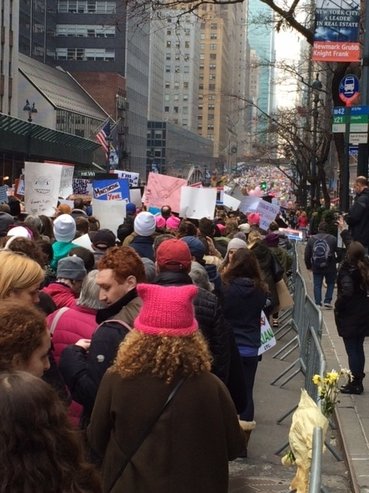
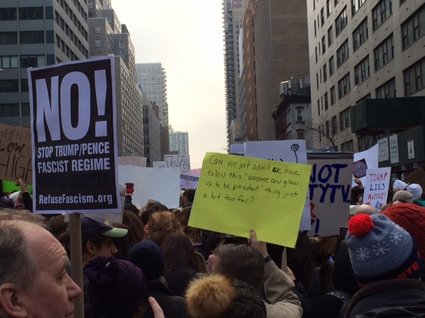
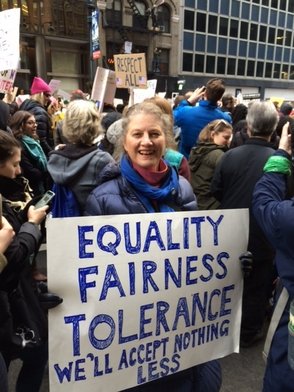

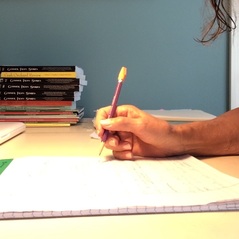

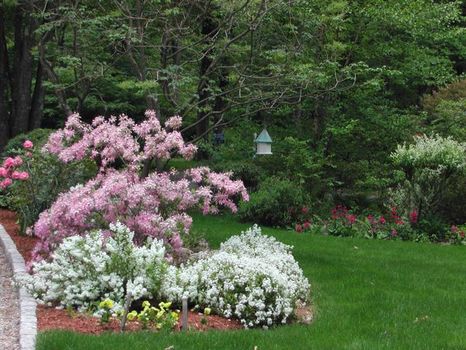

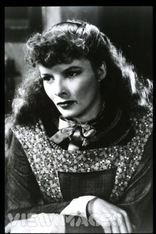
 RSS Feed
RSS Feed